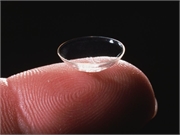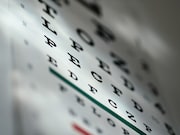Tag: Myopia (Nearsightedness)
Myopia Incidence Up in Hong Kong Schoolchildren During COVID-19
From pre-COVID-19 to COVID-19, time spent on outdoor activities decreased and screen time increased
Myopia Up in Children Confined to Home During Pandemic
Substantial myopic shift and increased prevalence of myopia seen among children aged 6, 7, 8 years
Bifocal Contact Lenses May Slow Children’s Myopia Progression
Myopia progression reduced with high add power versus medium add power multifocal or single-vision contact lenses
EMR Data Can Predict Myopia Development
Algorithm provided clinically acceptable accuracy in predicting myopia development by 18 years
Study IDs Early Life Factors Predictive of Myopia
Early life factors linked to myopia include maternal education, hours spent playing computer games
High Incidence of Myopia Among Chinese Schoolchildren
Incidence of myopia based on refraction without cycloplegia is 20 to 30 percent each year
Time Spent in Education Is Causal Risk Factor for Myopia
University graduate would be ≥−1 dioptre more myopic than someone leaving school at 16
Significantly Higher Serum Melatonin in Human Myopes
Positive correlation for melatonin concentration with more negative spherical equivalent refraction
Crowded Living Conditions May Up Myopia Risk in Children
Population density, home size predict axial length, non-cycloplegic refractive errors after adjustment
Findings Support Lower Doses of Atropine in Pediatric Myopia Rx
Efficacy of atropine is independent of dose, while adverse effects are dose dependent














